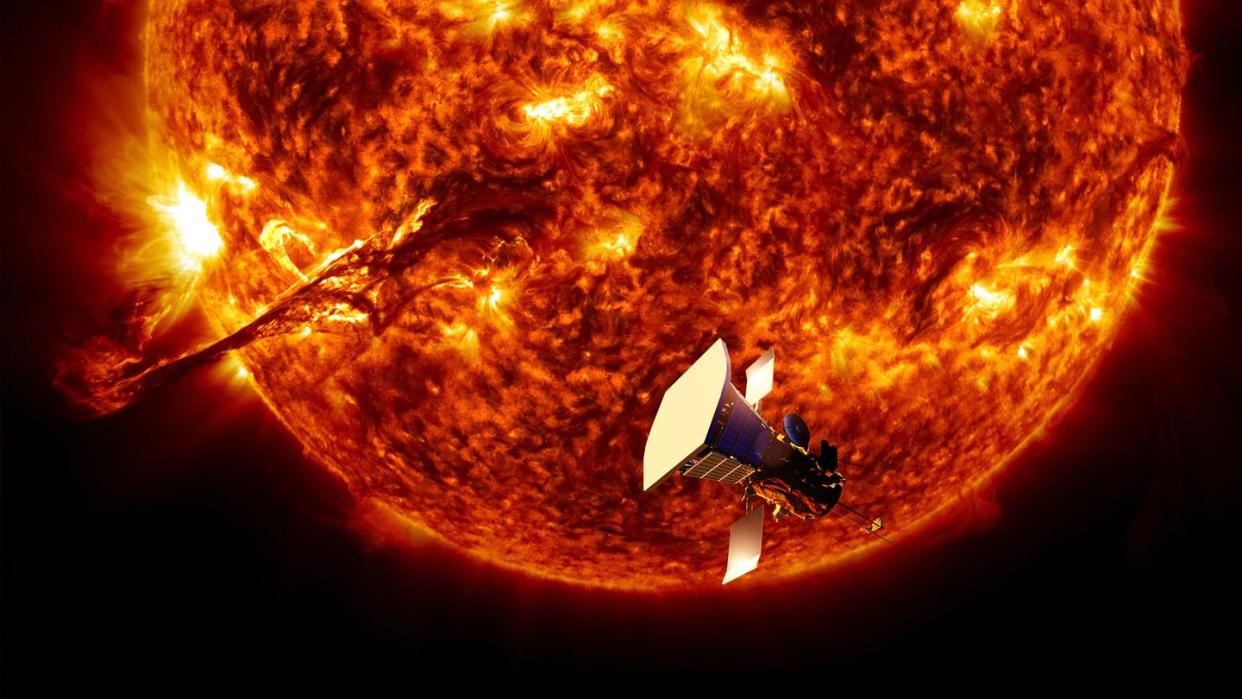A Spacecraft Touched the Sun's Corona. Now, It Will Probe Its Hidden Forces.

"Hearst Magazines and Yahoo may earn commission or revenue on some items through these links."
For nearly six years, NASA’s Parker Solar Probe has made increasingly closer approaches to the Sun. That journey will culminate in December of 2024 with its closest ever approach of 3.83 million miles.
After this Christmas Eve solar maneuver, the Parker Solar Probe will never again fly by the Sun at such a close proximity.
Scientists will keep their eyes peeled for data relating to waves found within solar wind, which could help answer a plethora of helio-based questions.
In August o2018, NASA launched an ambitious mission aimed directly at our Solar System’s star. Within a few months, the spacecraft whizzed by the Sun some 26.55 million miles from its “surface” (the Sun, being a massive ball of gas, doesn’t have a true surface). At the time, that distance exceeded the previous record holder, Helios 2, which flew within 27 million miles of the star back in 1976.
In the five years since, the Parker Solar Probe has made increasingly closer passes, and in 2021, even “touched” the atmosphere—coming within 8.1 million miles (scientists estimate the atmosphere starts around 4.3 to 8.6 million miles from the surface). On December 24, 2024, NASA’s sun chariot will make its closest approach yet—a staggering 3.83 million miles from the Sun’s surface, where it’ll need to withstand intense radiation and temperatures around 2,500 degrees Fahrenheit.
“We are basically almost landing on a star,” Parker project scientist Nour Raouafi told the BBC.
According to NASA, this will be the closest that the Parker Solar Probe will ever get to the Sun. And while 3.83 million miles may seem like a lot on Earth, it’s only 4 percent of the distance between the Earth and the Sun—also known as an astronomical unit (AU). Over the past five years, the probe has used a number of gravity assists with Venus to decrease its orbital perihelion (the point of an orbit closest to the Sun), and the probe will pass Venus for the final time in November, sending it on yet another record-breaking trajectory.
The probe survives these close encounters—along with the Sun’s temperatures—because the Sun’s corona isn’t particularly dense. As NASA explains, similar to the way your hand can withstand being in the oven longer than being in a pot of boiling water (don’t do either), the Parker Solar Probe won’t be subjected to as much heat due to the scarcity of particles. The probe is also protected with a heat shield that keeps the spacecraft in the shade, as well as an onboard cooling system.
The probe is also traveling incredibly fast—in fact, it’s the fastest spacecraft in human history. Speeding through space at around 430,000 mph, the Parker Solar Probe could essentially travel from Philadelphia to Washington D.C. in one second. In other words, it won’t be around long enough to bear the brunt of the Sun’s immense radiation and heat.
The Parker Solar Probe has already improved our understanding of solar particles, the origin of solar winds, and the energy flows of the outer atmosphere of our star. On this close approach, scientists will keep an eye out for different types of waves in the Sun’s solar winds.
“We don’t know what we’ll find, but we’ll be looking for waves in the solar wind associated with the heating,” NASA’s head of science, Nicky Fox, told the BBC. “I suspect we’ll sense lots of different types of waves which would point to a mix of processes that people have been arguing over for years.”
You Might Also Like

